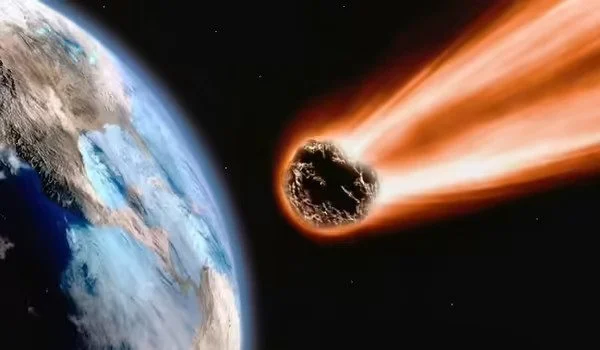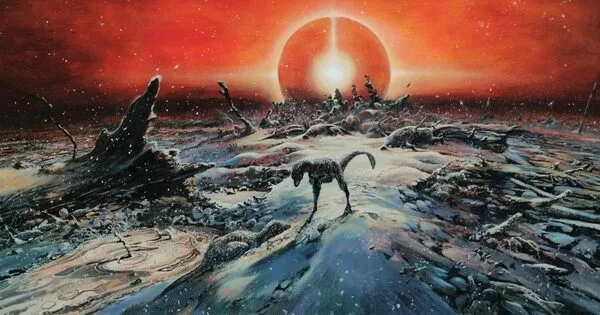Asteroid impacts on the moon millions of years ago correspond to large space rock strikes on Earth, such as the massive impact that wiped out the nonavian dinosaurs. The discovery demonstrates that major impacts during Earth’s prehistory were not isolated occurrences. Instead, these asteroid impacts were accompanied by a series of smaller hits both here and on the moon, which has over 9,000 craters left by space rock impacts.
The research could help astronomers better understand the dynamics of the inner solar system and assist in calculating the likelihood that our planet will be struck by potentially devastating massive space rocks in the future. The results were obtained by studying microscopic glass beads within lunar soil samples returned to Earth by China’s Chang’e-5 lunar mission in 2020, according to scientists at Curtin University’s Space Science and Technology Centre (SSTC).
Meteor strikes generate intense heat and pressure, which results in the formation of these tiny glass beads. This means that researchers can use the ages of these beads to reconstruct a timeline of lunar bombardment. The SSTC team discovered that the timing and frequency of asteroid impacts on the moon were mirrored by space rock strikes on Earth, implying that the timeline the team created could also provide insight into the evolution of our planet.
We combined a wide range of microscopic analytical techniques, numerical modeling, and geological surveys to determine how and when these microscopic glass beads from the moon were formed. The study also found that large impact events on Earth, such as the Chicxulub crater 66 million years ago, could have been accompanied by a number of smaller impacts.
Alexander Nemchin
“We combined a wide range of microscopic analytical techniques, numerical modeling, and geological surveys to determine how and when these microscopic glass beads from the moon were formed,” said lead study author Alexander Nemchin, an SSTC professor.
Some of the lunar glass beads were created around 66 million years ago, around the time the dinosaur-killing asteroid known as the Chicxulub impactor struck Earth in what is now the Gulf of Mexico, near Mexico’s Yucatán Peninsula. The impact caused what is known as the Cretaceous-Paleogene extinction event, which killed three-quarters of all life on Earth, including nonavian dinosaurs.

The roughly 6.2-mile-wide (10 kilometers) Chicxulub impactor struck Earth at around 12 miles per second (19.3 kilometers per second), or 43,200 mph (69,524 kph), leaving an impact crater measuring about 93 miles (150 km) wide and 12 miles (19 km) deep. Aside from the shock waves generated by the initial impact, the asteroid hit caused a series of life-altering knock-on effects, including throwing up thick clouds of dust that blocked out the sun.
The new research from SSTC joins other work suggesting that this monster dinosaur-killing space rock may have been joined by other, smaller asteroids that also struck Earth and that could be revealed by studying the moon’s history of asteroid impacts.
“The study also found that large impact events on Earth, such as the Chicxulub crater 66 million years ago, could have been accompanied by a number of smaller impacts,” Nemchin said. “If this is correct, it suggests that the age-frequency distributions of impacts on the moon might provide valuable information about the impacts on the Earth or inner solar system.”
The team now aims to compare data collected from the Chang’e-5 lunar soil samples with other soil samples from the moon and with the ages of craters across the lunar surface. This analysis could reveal other impact events across the moon and, in turn, help to uncover signs of asteroid impacts here on Earth that may have affected life.





